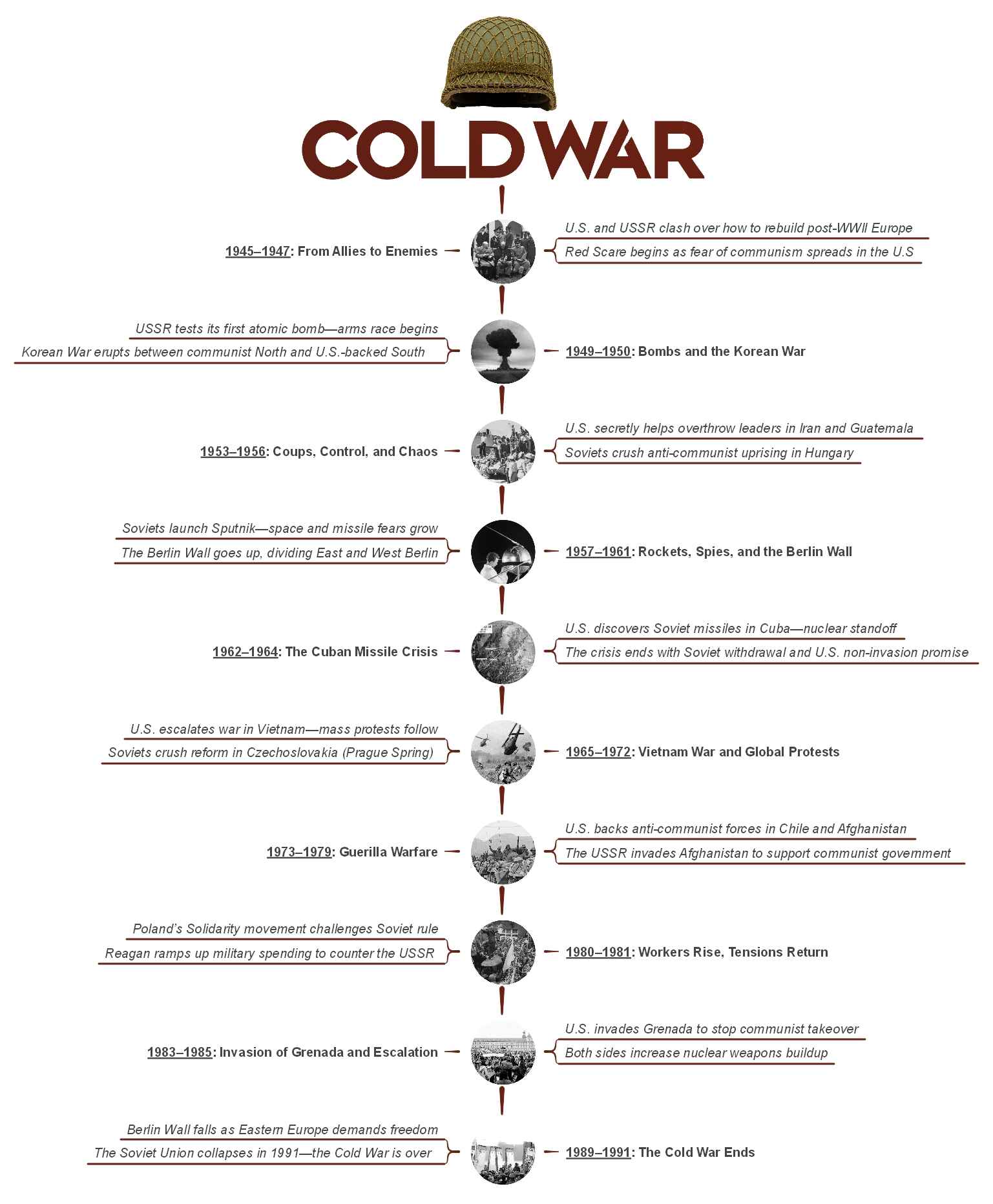So, World War II ends in 1945, and everyone’s thinking, “Finally, some peace!” But no - just when the world starts to breathe, boom, a brand-new conflict begins. It’s not a shooting war, though. It’s the Cold War.
This one’s all about tension. The U.S. and the Soviet Union used to be on the same side - but now? Not even close. One’s all in for freedom and capitalism. The other’s all about control and communism.
And guess what? They both want to shape the future of Europe, especially Germany. Let’s just say, things get really complicated.
In this timeline, we’ll explore spies, secret missions, nuclear threats, and all the major events. It's history, all the war drama that you'd expect.
The Cold War Timeline
The Cold War lasted over four decades. It was filled with tense moments and close calls. From Berlin to Cuba, the world watched as the superpowers pushed the limits.
The term Cold War (coined by writer George Orwell) doesn't mean it was cold outside. It means there was no direct fighting between the two sides. Instead, they clashed through politics, economics, spying, and influence. It was all about power; who could spread their ideas further, build more weapons, and control more of the world.
1945-1947: From Allies to Enemies
World War II ended in 1945, but peace didn't last long. The U.S. and the Soviet Union had worked together to defeat Hitler. But after the war, they didn't trust each other. They had very different ideas about how countries should be run. The U.S. believed in freedom and capitalism. The Soviets believed in communism and strict control.
Soon, President Truman warned Americans about the dangers of communism. People became afraid that Soviet spies were hiding everywhere. This fear was called the Red Scare. Hollywood actors, writers, and even government workers were accused. A new kind of war had started: a cold one.
1949-1950: Bombs and the Korean War
In 1949, the Soviet Union shocked the world by testing its first atomic bomb. Before that, only the U.S. had nuclear weapons. Now both sides had deadly power, and people feared a nuclear war could happen anytime. This sparked a dangerous arms race, with both sides continually building and upgrading their weapons.
Then, in 1950, a real war broke out in Korea. Communist North Korea, supported by the Soviets and China, attacked South Korea, supported by the U.S. The fighting was brutal and lasted three years. In the end, nothing changed - Korea stayed divided, and the Cold War grew even colder.
1953-1956: Coups, Control, and Chaos
During these years, the U.S. got involved in other countries to stop the spread of communism. In Iran, the CIA helped remove a leader they didn't like and supported a new government friendly to the West. It was all done in secret, but the impact was huge.
In Hungary, people tried to break away from Soviet control. But Soviet tanks rolled in and crushed the revolution. Meanwhile, the U.S. began helping South Vietnam as the region became more unstable. Both superpowers were playing a dangerous game, using other countries like chess pieces in their global fight.
1957-1961: Rockets, Spies, and the Berlin Wall
In 1957, the Soviet Union launched Sputnik, the first satellite in space. It was a huge surprise. Americans feared that if the Soviets could send rockets into space, they could also launch nuclear bombs. This started the Space Race, a battle to control the skies and space.
At the same time, a revolution in Cuba brought communist Fidel Castro to power. The U.S. was alarmed; communism had arrived just 90 miles from Florida. Then, in 1961, the Soviets built the Berlin Wall to stop East Germans from escaping to the West. It became the symbol of a divided world.
1962-1964: The Cuban Missile Crisis
This was one of the scariest moments in history. The Cuban Missile Crisis happened in 1962 when the U.S. discovered Soviet missiles in Cuba. These missiles could hit American cities in minutes. President Kennedy ordered a naval blockade and warned the Soviets to remove the weapons.
For 13 tense days, the world waited. Would there be a nuclear war? Finally, the Soviets agreed to take the missiles out of Cuba. The U.S. promised not to invade. Disaster was avoided, but just barely. At the same time, the U.S. began sending more troops to Vietnam, worried about communism spreading in Asia.
1965-1972: Vietnam War and Global Protests
In 1965, the US started the Vietnam War. The U.S. sent hundreds of thousands of soldiers to fight in Vietnam, trying to stop communism. But the war was long, bloody, and confusing. Many Americans began to question why they were even fighting. Protests broke out across the country. People wanted peace.
Meanwhile, the U.S. sent troops to the Dominican Republic to stop another possible communist takeover. In Czechoslovakia, people tried to change their government, but the Soviets crushed the movement. Despite the chaos, the U.S. and Soviets started talking about limiting nuclear weapons. Even President Nixon visited China, hoping to ease Cold War tensions.
1973-1979: Guerrilla Warfare
The Vietnam War ended for the U.S., but the Cold War didn't. In Chile, the U.S. secretly helped remove a leader they didn't like. A new, pro-American government took over. Around the same time, the Soviet Union invaded Afghanistan to keep a communist government in power.
The U.S. responded by helping Afghan rebels, sending money and weapons. This secret support would later have major consequences. Both the U.S. and the Soviets were still fighting each other, just through other people's wars. These were the shadow wars, full of spying, secret missions, and deadly consequences for the countries caught in between.
1980-1981: Workers Rise, Tensions Return
In Poland, workers formed a group called Solidarity. They wanted more freedom and better treatment. This was rare in a country under Soviet control. The movement grew fast, and the Soviets were worried. Could this spread to other communist countries?
In the U.S., President Ronald Reagan took a tough stand against communism. He increased military spending and put pressure on Soviet allies. He also stopped trade with countries in Central America that supported communism. The Cold War was heating up again. But behind the scenes, big changes were on the way.
1983-1985: Invasion of Grenada and Escalation
In 1983, the U.S. invaded the small island of Grenada. A communist government had taken over, and the U.S. wanted to stop it before it grew stronger. American troops quickly took control, and a new, friendly government was installed.
Meanwhile, both the U.S. and Soviet Union kept building more nuclear weapons. Each side wanted to stay ahead. Fear of war was everywhere again. People held protests, calling for peace. The world seemed stuck in a cycle of threats and fear, but change was coming sooner than anyone expected.
1989-1991: The Cold War Ends
In 1989, protests broke out across Eastern Europe. People wanted freedom and better lives. In Germany, the famous Berlin Wall came down. Families reunited, and the world watched in amazement. Communism was collapsing country by country.
In 1991, the Soviet Union officially ended. It broke into smaller countries, and Boris Yeltsin became the new Russian president. The Cold War was finally over. After nearly 50 years of tension, spying, and fear, the world breathed a sigh of relief. It hadn't ended with a bang, but with people choosing freedom.
How to Make the Cold War Timeline in EdrawMind?
Turning your notes into a visually pleasing timeline is easy with EdrawMind. It lets you create engaging and professional diagrams with dozens of built-in templates and customization options. The endless symbol library provides ways to make your timelines even more interesting.
Let's see how you can create the Cold War timeline in EdrawMind:
Step 1: Create a New File
- Download or try EdrawMind online.
- Sign in with a new Wondershare account for free or use your social accounts to log in.
- Click Create in the top-left corner.
- Select Local MindMap from the menu.
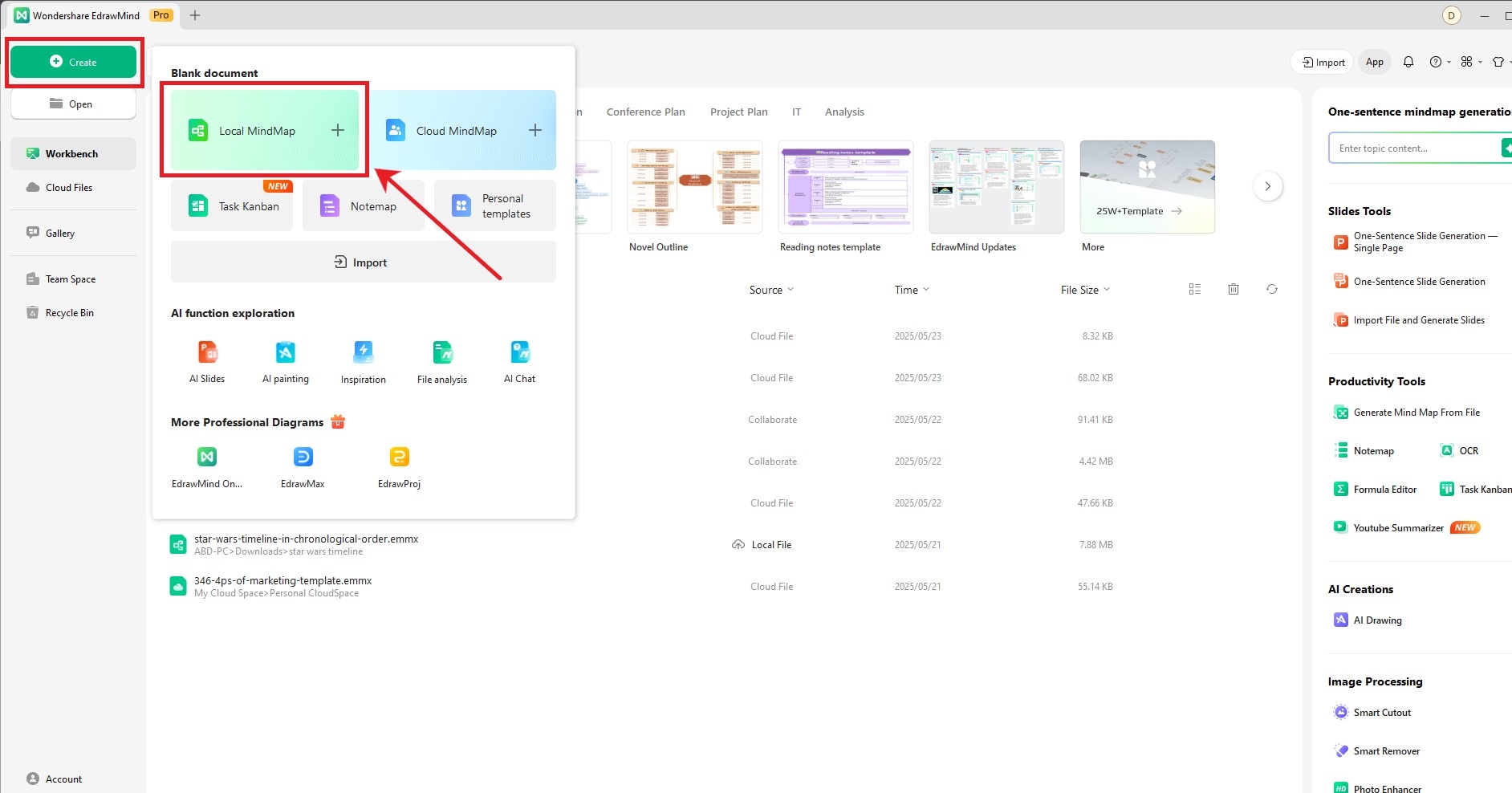
Step 2: Switch to the Timeline Layout
Let's change the default mindmap layout.
- Select the Main Idea and click Layout from the floating menu.
- Choose the Timeline (down) layout from the list.
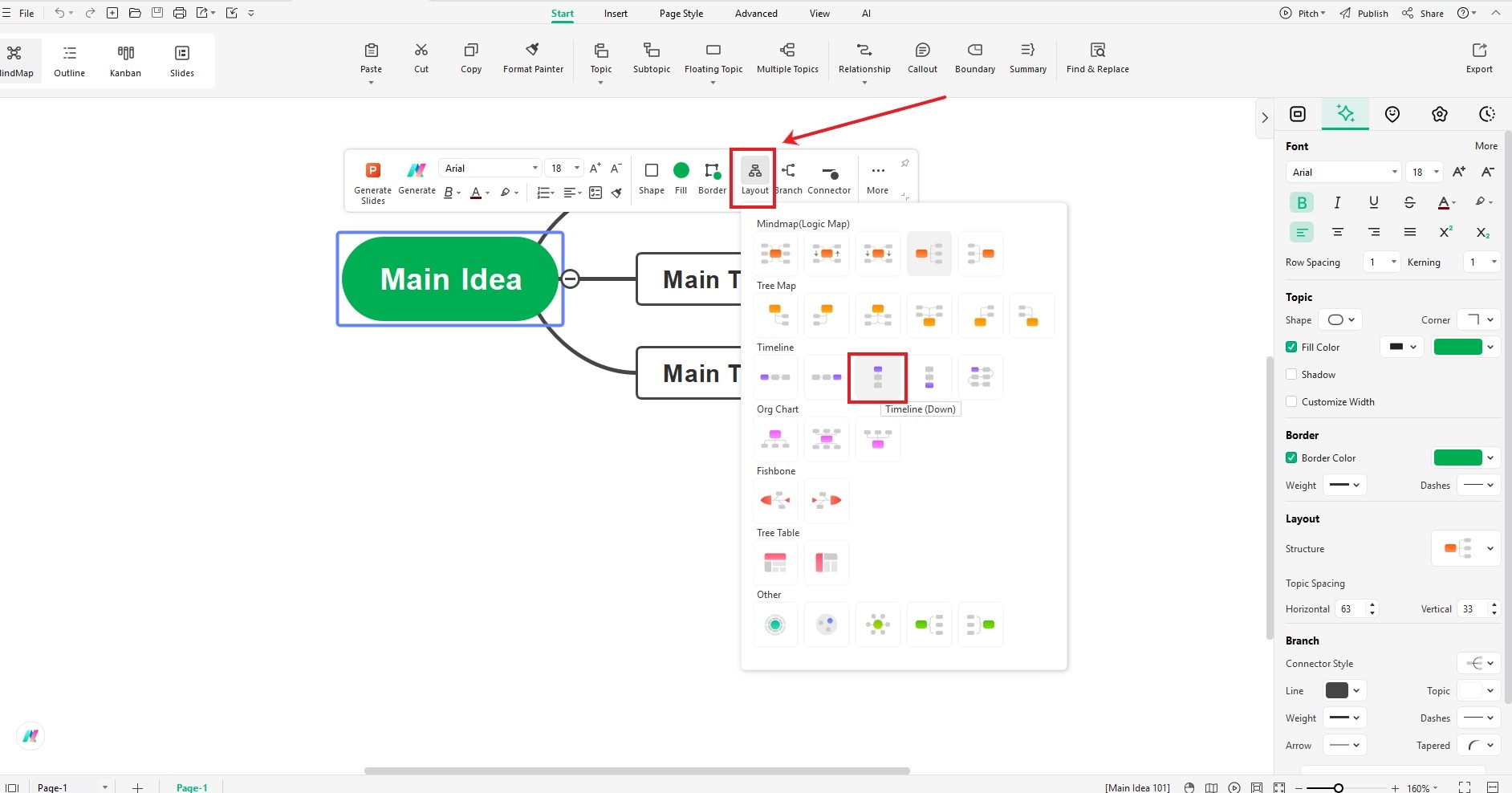
Step 3: Customize the Timeline
- Select one or multiple topics and customize them from the floating menu and the right toolbar.
- Choose the color, border, line style, shape, and layout of the main topics.
- Double-click a Main Topic to select its text.
- Start typing to enter new content.
- Customize the font settings from the floating menu.
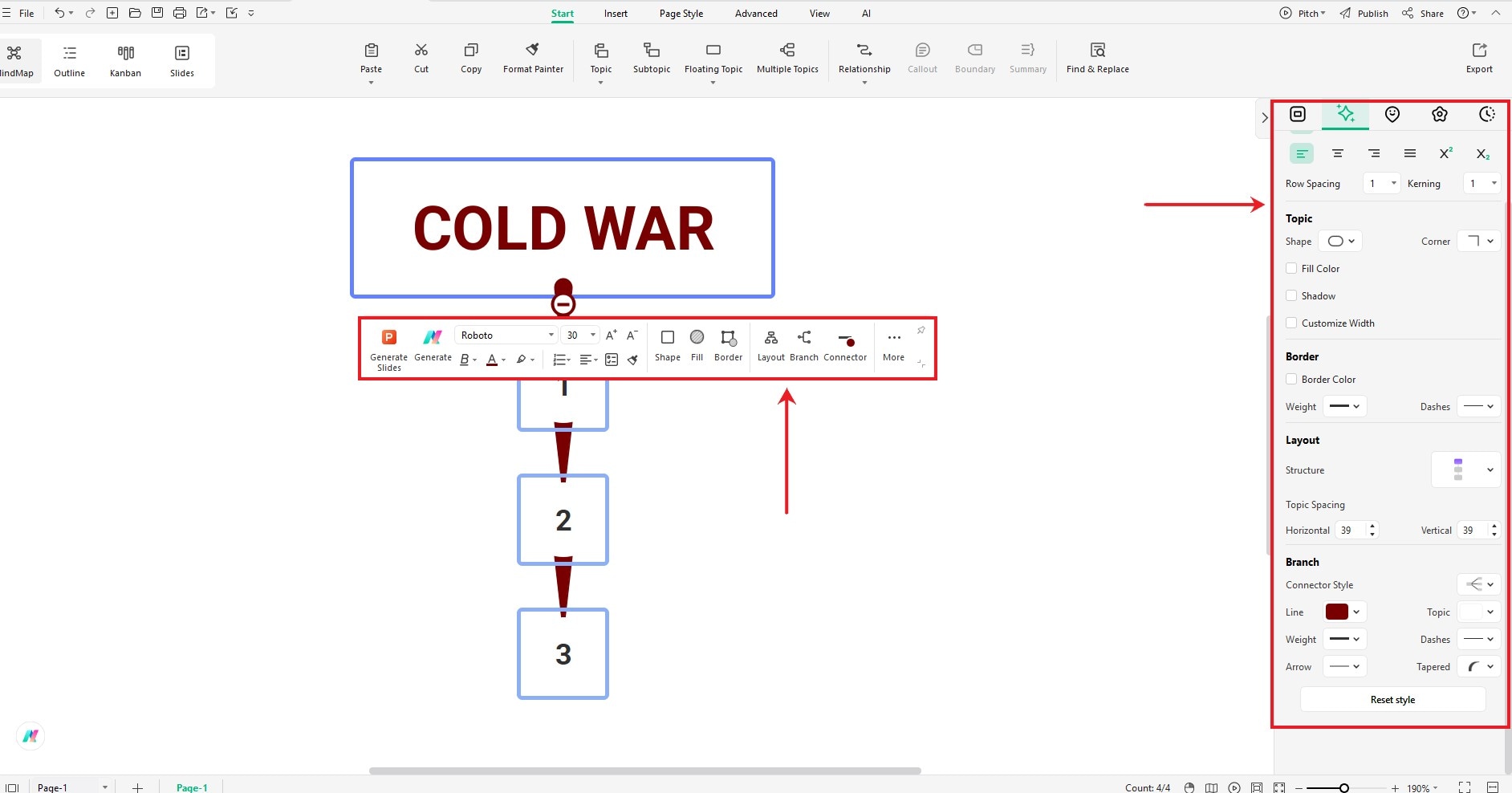
Step 4: Add New Topics
- Select the Main Idea and click Topic from the top menu bar to add new entries at the bottom.
- Similarly, select Floating Topic and click anywhere on the canvas to place it.
- Customize these newly added topics like in the previous step.
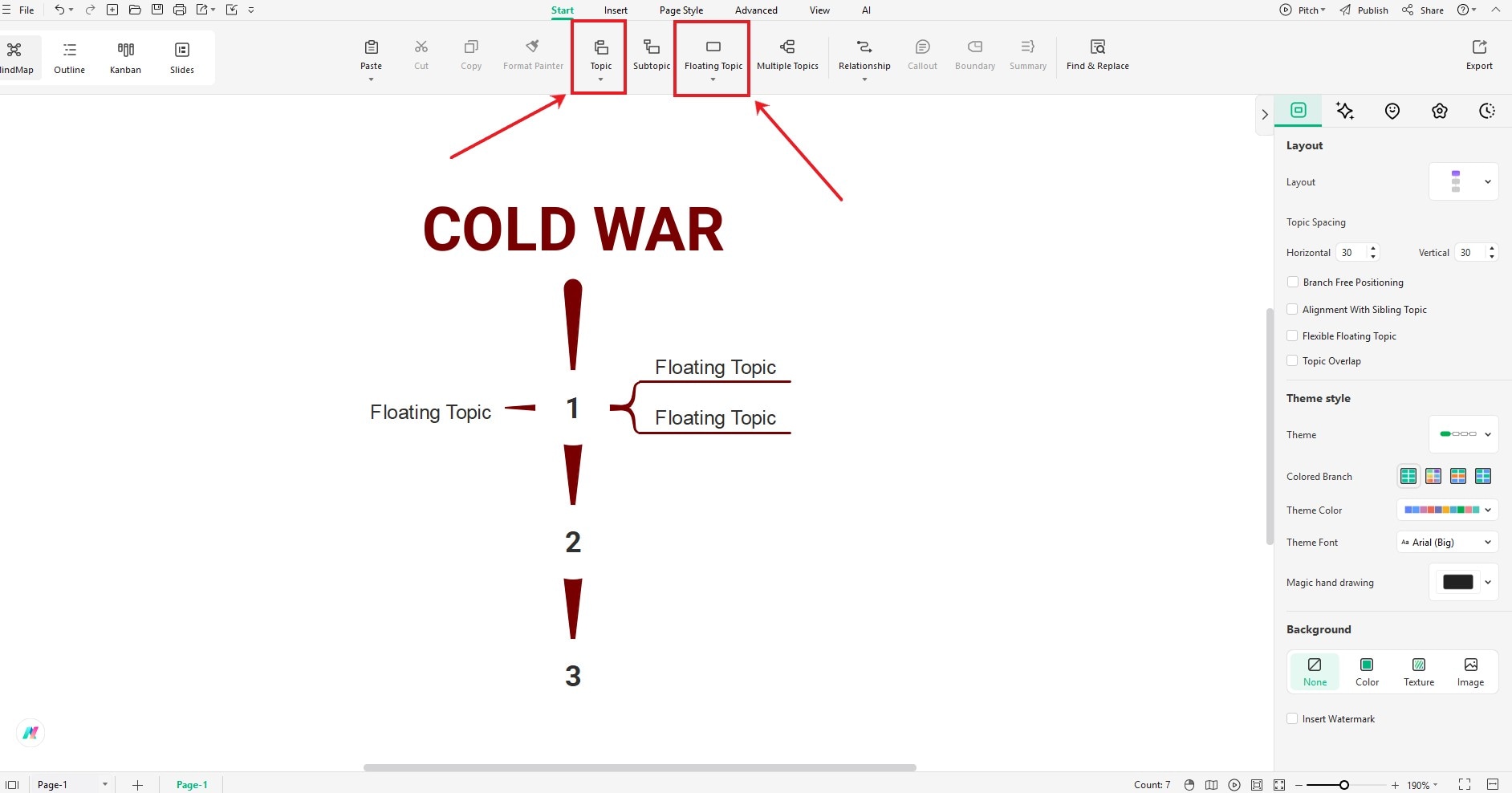
Step 5: Insert Images
- Download or copy an image and paste it into EdrawMind.
- Drag the picture and insert it into a shape.
- Use the right toolbar to customize image settings.
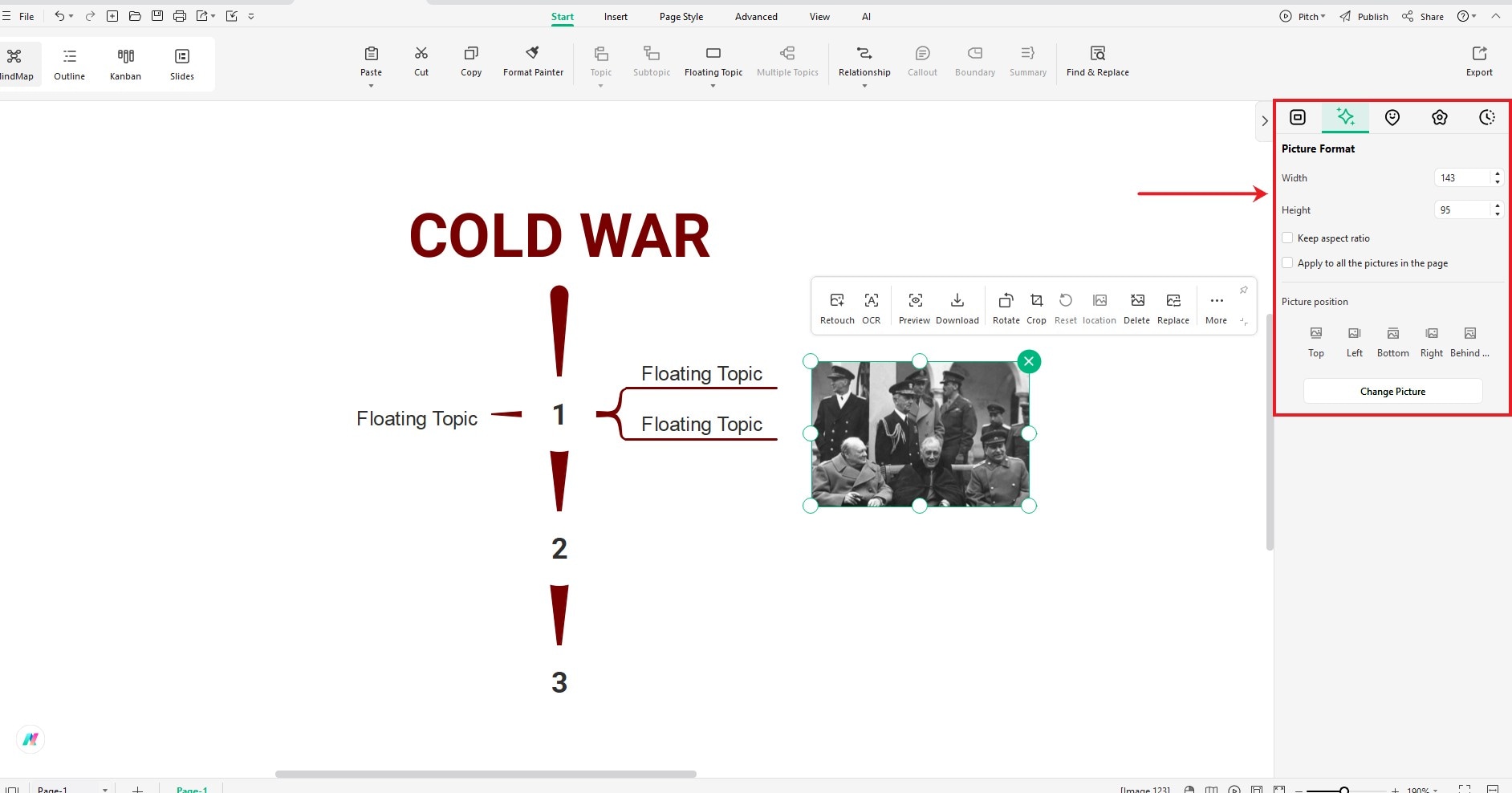
Step 6: Finalize & Save
- Everything set? Click the File button at the top-left corner.
- Select Save to download the file in EdrawMind's default format.
- Or, click Export to get the timeline in your desired format.
- EdrawMind exports diagrams in PNG, JPG, PDF, SVG, and many other formats.
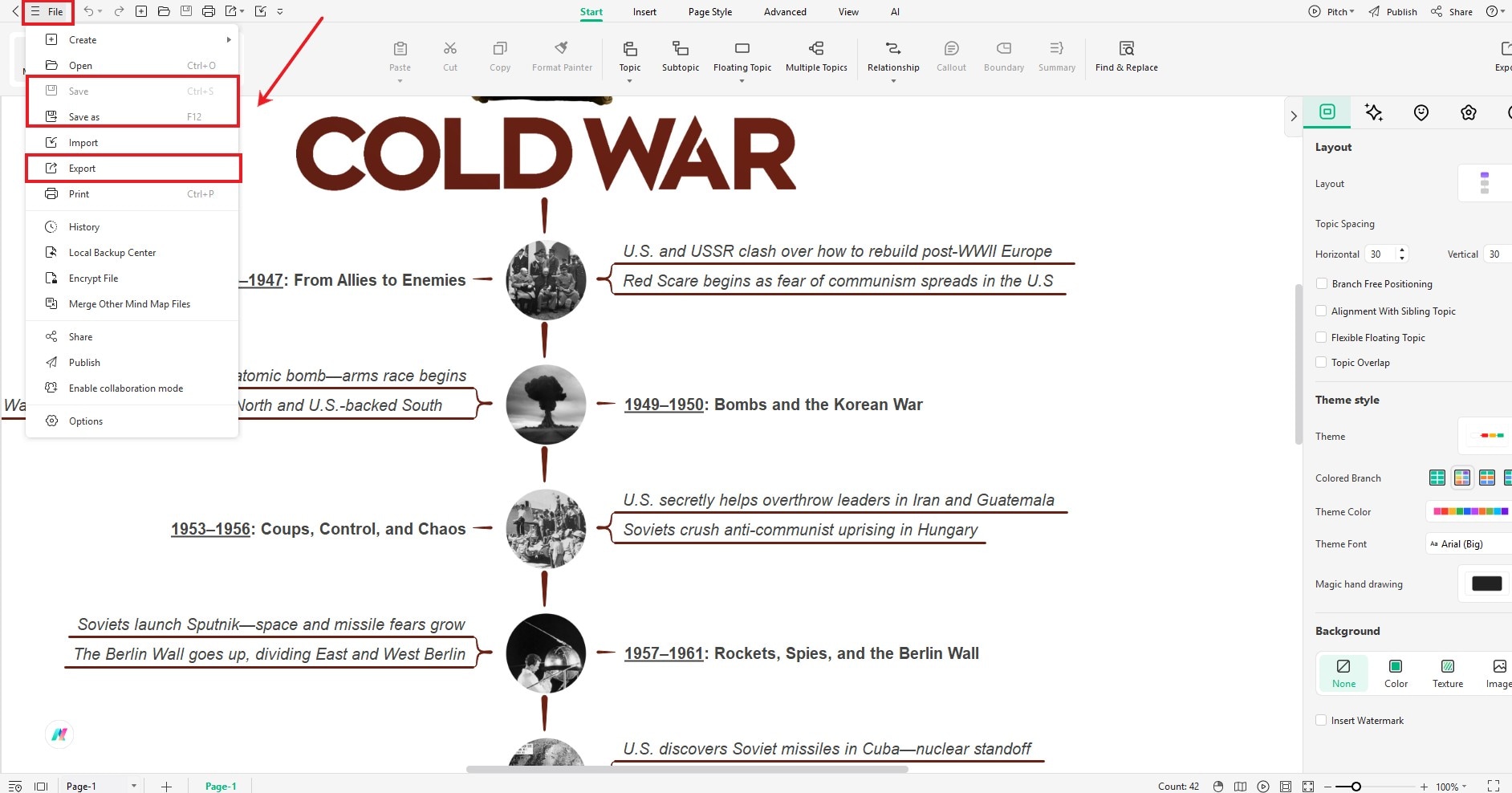
What's Next?
So, that's the Cold War: decades of drama, spies, nukes, protests, and power plays. Even though it never turned into a full-on world war, it shaped the way countries think, act, and deal with each other to this day. The tension may be over, but the lessons? Still super relevant.
Want to explore it your way? Try EdrawMind. It's perfect for creating mind maps and timelines that make complex history way easier to follow. Give it a try, connect the dots, and bring your notes or maps to life!



